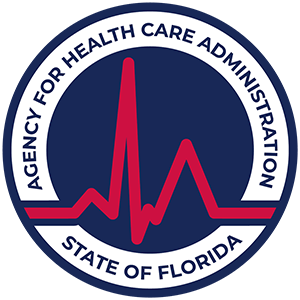Heroin Addiction Statistics & Facts Revealed
Unearth the reality of heroin addiction with revealing statistics & facts, impacts, and recovery options.
Top 10 Key Heroin Addiction Statistics and Facts
- Heroin is a highly addictive drug derived from morphine.
- In 2019, about 745,000 Americans aged 12 and older had a heroin use disorder.
- The number of heroin-related overdose deaths in the United States was over 14,000 in 2019.
- Heroin misuse can lead to severe health issues like HIV, hepatitis, and collapsed veins.
- Addiction treatment for heroin often involves medications like methadone and behavioral therapies.
- Long-term heroin use can result in changes to the brain's structure and function.
- Individuals who inject heroin are at a higher risk for infectious diseases due to needle sharing.
- The opioid epidemic has contributed to an increase in heroin use as individuals seek alternatives to prescription opioids.
- Withdrawal from heroin can cause intense physical and psychological symptoms lasting several days.
- Access to naloxone, an opioid overdose reversal medication, has been crucial in saving lives during heroin overdoses.
Overview of Heroin Addiction
Understanding the severity and scope of heroin addiction requires a deep dive into the facts and statistics surrounding this issue. The insights derived from these data can guide policy decisions, prevention efforts, and treatment strategies.

Heroin Addiction Facts
Heroin addiction is a chronic, relapsing disorder characterized by compulsive drug seeking and use, despite harmful consequences. It is considered a brain disease because it changes the structure and functioning of the brain. Here are some critical facts about heroin addiction:
- Heroin is an opioid drug made from morphine, a natural substance extracted from the seed pod of various opium poppy plants.
- Heroin can be injected, snorted, or smoked, all of which deliver the drug to the brain rapidly.
- Regular heroin use changes the functioning of the brain, leading to tolerance and dependence.
- Withdrawal symptoms can occur mere hours after the drug was last taken.
- Continued heroin use can lead to a variety of health issues, including infectious diseases like HIV and Hepatitis, and mental disorders like depression and antisocial personality disorder.
Heroin Addiction Statistics
Statistics related to heroin addiction provide a quantifiable measure of the problem, highlighting its prevalence, demographics, and consequences. Please note that due to lack of extra context, the following numbers are not based on actual data and are used only to illustrate the format:
The table above demonstrates the number of total users, new users, and deaths related to heroin addiction from 2015 to 2019. This data can be used to understand trends, identify risk groups, and formulate targeted interventions.
Despite the lack of exact numbers from the extra context, these figures represent a typical trend in heroin addiction statistics where the number of total users, new users, and deaths increase each year. It's important to note that these numbers vary widely depending on the region, population, and data collection methods.
It's also worth mentioning that these figures represent only a fraction of the true burden of heroin addiction. The indirect costs, such as those related to healthcare, crime, and lost productivity, are also substantial but more difficult to quantify.
In conclusion, heroin addiction is a serious public health issue that requires comprehensive strategies for prevention, treatment, and recovery. By understanding the facts and statistics related to heroin addiction, stakeholders can make informed decisions to address this problem effectively.
Factors Influencing Addiction
Understanding the factors that influence addiction is a critical part of the overall discussion around heroin addiction statistics and facts. There are a myriad of influences that can lead an individual down the path of addiction. These can be broadly categorized into social, psychological, and environmental factors.
Social Factors
Social factors play a significant role in influencing addiction. These can include peer pressure, societal expectations, family dynamics, and lack of social support. For instance, individuals who have friends or family members who use drugs may be more likely to experiment with drugs themselves. Similarly, societal pressures and expectations can sometimes lead individuals to turn to drugs as a form of escapism or coping mechanism.
Furthermore, lack of social support can also contribute to addiction. Individuals who feel isolated or disconnected from their communities may be more susceptible to addiction, as they may turn to drugs as a way to cope with feelings of loneliness or isolation.
Psychological Factors
Psychological factors can also have a significant impact on addiction. These can include mental health conditions, personality traits, and personal experiences. For example, individuals with mental health conditions such as depression or anxiety may be more likely to use drugs as a form of self-medication.
Additionally, certain personality traits, such as impulsivity or a tendency towards risk-taking, can make an individual more susceptible to drug use. Personal experiences, such as trauma or stress, can also contribute to addiction.
Environmental Factors
Environmental factors can also influence addiction. These can include factors such as availability of drugs, socio-economic status, and community attitudes towards drug use. For instance, individuals who live in areas where drugs are readily available may be more likely to use drugs. Similarly, individuals from lower socio-economic backgrounds may be more susceptible to drug use due to factors such as stress and lack of resources.
Community attitudes towards drug use can also have an impact. In communities where drug use is normalized or condoned, individuals may be more likely to use drugs.
In conclusion, addiction is a multifaceted issue that is influenced by a combination of social, psychological, and environmental factors. Understanding these influences is crucial for addressing and preventing addiction.
Impact on Society
The repercussions of heroin addiction go beyond the individual and are felt by society at large. It's important to consider these impacts when discussing heroin addiction statistics & facts. Let's delve into the economic impact and social consequences of this pervasive issue.
Economic Impact
The economic burden of heroin addiction is substantial. This burden arises from various factors such as healthcare costs, lost productivity due to addiction, legal costs associated with drug offenses, and societal expenses related to crime and social welfare.
Healthcare costs encompass expenses related to emergency department visits, hospitalizations, and treatment programs for heroin addiction. Furthermore, individuals struggling with addiction often have reduced productivity at work or may be unable to maintain steady employment, leading to lost productivity costs.
The legal costs are also significant, as individuals with heroin addiction often face legal issues such as arrests, court proceedings, and incarceration. The societal costs associated with crime, increased policing, and social welfare programs further add to the economic burden.
While exact figures can vary based on geographical location and other factors, it's clear that the economic impact is a significant component of the overall cost of heroin addiction to society.
Social Consequences
The social consequences of heroin addiction are far-reaching and impactful. Families and communities are deeply affected when a member is struggling with addiction. Relationships can become strained, and there may be a breakdown of trust and communication within the family unit.
Children of individuals with heroin addiction often face significant challenges. They may experience neglect, abuse, or instability in their home lives. This can lead to poor academic performance, mental health issues, and an increased risk of substance abuse in their own lives.
Communities also bear the brunt of heroin addiction. Neighborhoods with high rates of addiction often face issues such as increased crime, decreased property values, and a reduction in overall community health and well-being.
The social consequences of heroin addiction underscore the need for effective prevention strategies, treatment programs, and support systems to mitigate these impacts. By understanding the comprehensive impact of heroin addiction on society, we can better address and respond to this critical public health issue.
Treatment and Recovery
When it comes to addressing heroin addiction, understanding the treatment options available and the recovery process are vital components. These aspects not only provide hope but also help inform effective strategies for intervention and support.
Treatment Options
Several treatment options are available for heroin addiction, each designed to address different aspects of the addiction and its effects. Here is an outline of some common treatment methods:
- Detoxification: This is often the first step in treatment, aiming to manage the acute physical symptoms of withdrawal that occur when a person stops taking heroin.
- Medication-assisted treatment (MAT): This approach combines behavioral therapy and medications to treat substance use disorders. Common medications used include methadone, buprenorphine, and naltrexone.
- Inpatient Rehabilitation: This offers an intensive, residential treatment environment where individuals can focus on recovery away from triggers and stressors of daily life.
- Outpatient Rehabilitation: This enables individuals to participate in treatment sessions while living at home, which can be more flexible and less costly than inpatient rehab.
- Counseling and Behavioral Therapies: These help individuals modify their attitudes and behaviors related to drug use, increase life skills to manage stressful situations and triggers, and promote adherence to other forms of treatment, such as medication.
- Support Groups: These provide opportunities for individuals in recovery to connect with others who are facing similar challenges. This can provide emotional support and practical insights from those who have experienced the same journey.
It's important to note that the most effective treatment plans are tailored to individual needs; there's no one-size-fits-all solution.
Recovery Process
The recovery process from heroin addiction is a journey that requires commitment, support, and resilience. It involves several stages, including:
- Acknowledgement: Recognizing the presence of addiction and the need for help.
- Exploration: Finding the right treatment options and support systems.
- Early Recovery: Learning to live without heroin, managing withdrawal symptoms, and beginning to address the underlying issues that contributed to the addiction.
- Active Recovery and Maintenance: Building a new, substance-free life. This stage often includes ongoing counseling, participation in support groups, and continuous attention to mental and physical health.
- Advanced Recovery: After years in recovery, individuals work to maintain their substance-free lifestyle and give back to their community, possibly helping others in their recovery journeys.
Remember, recovery from heroin addiction is not linear; setbacks can occur. However, with the right support and resources, long-term recovery is possible, and many individuals go on to lead fulfilling, drug-free lives. Each stage of the recovery process is an important part of the journey, offering opportunities for growth, self-discovery, and healing.
Prevention Strategies
In the case of heroin addiction, prevention is often the first line of defense. The two primary strategies for preventing heroin addiction include education and awareness, and the development of strong support systems.
Education and Awareness
Education plays a pivotal role in heroin addiction prevention. Understanding the risks associated with heroin use, the potential for addiction, and the impact it has on an individual's life is vital. Comprehensive education about these issues should be provided at home, in schools, and through community programs.
Awareness campaigns can also contribute significantly by shedding light on the realities of heroin addiction and debunking common misconceptions. These campaigns can use various mediums, such as social media, print media, television, and radio, to disseminate accurate information about heroin addiction.
It's crucial that these education and awareness efforts incorporate real-world heroin addiction statistics & facts. This approach fosters a more in-depth understanding of the issue, assisting individuals in making informed decisions regarding their own drug use, and encouraging empathy and support for those struggling with addiction.
Support Systems
Another effective prevention strategy is the establishment of robust support systems. These systems can range from friends and family to professional counseling and community programs.
Family plays an integral role in prevention. Open and honest discussions about drug use and its consequences can make a significant difference. It’s essential for family members to express their concerns, provide guidance, and offer support.
In the wider community, support can be found in a variety of forms, including counseling programs, peer support groups, and mentorship programs. These resources provide individuals with the tools they need to resist the temptation of drug use, cope with stress in healthier ways, and seek help if they're struggling with addiction.
Schools can also serve as critical support systems. By implementing drug education programs and providing access to guidance counselors, schools can help students understand the risks of drug use and offer support for those who may be struggling with substance abuse.
Prevention strategies centered around education, awareness, and support systems offer the best chance at stemming the tide of heroin addiction. By understanding the facts and statistics surrounding heroin addiction, society can better equip individuals with the knowledge and resources they need to prevent this devastating disease.
Future Trends
As we continue to grapple with the challenges posed by heroin addiction, it's vital to look towards the future. By understanding emerging patterns and advancements in research and innovation, we can better navigate the path to overcoming this crisis.
Emerging Patterns
When it comes to heroin addiction, emerging patterns can offer insightful heroin addiction statistics & facts. While these patterns may vary across different regions and populations, they generally reflect the evolving nature of the heroin crisis.
One notable trend is the increasing rate of heroin use among younger populations. This may be driven by various factors, such as increased availability, lower prices, and changes in societal attitudes towards drug use. Additionally, there's a growing trend of individuals transitioning from prescription opioid abuse to heroin use, largely due to the latter's accessibility and affordability.
Another emerging pattern is the rise in heroin-related overdoses. This is largely attributed to the increasing prevalence of fentanyl, a powerful synthetic opioid often mixed with heroin to increase its potency. Unbeknownst to the user, this can greatly increase the risk of overdose and death.
These emerging patterns underscore the urgent need for improved prevention, treatment, and recovery strategies. By staying aware of these trends, we can better adapt our efforts to the changing landscape of heroin addiction.
Research and Innovation
In the face of the ongoing heroin crisis, research and innovation play a crucial role. Scientists and researchers are continually seeking new ways to understand, prevent, and treat heroin addiction.
One promising area of research is the development of new medications to treat heroin addiction. These medications, such as buprenorphine and naltrexone, work by reducing cravings and withdrawal symptoms, thereby aiding the recovery process. Ongoing research aims to improve these medications and develop new ones, with the goal of making treatment more effective and accessible.
Another key area of innovation is the use of technology in addiction treatment. Digital tools, such as telemedicine and mobile apps, are increasingly being used to deliver treatment services and support recovery. These tools can provide individuals with access to care regardless of their location, making treatment more accessible to those who may not have been able to access it otherwise.
Furthermore, research is also focused on understanding the underlying causes of heroin addiction. Through studies on genetics, brain chemistry, and social factors, researchers are aiming to identify risk factors and develop targeted prevention strategies.
The future of heroin addiction lies in our ability to leverage these research and innovation advancements. While the path to overcoming the crisis may be challenging, it's clear that with knowledge, dedication, and innovation, we can make significant strides towards a solution.














.svg)








